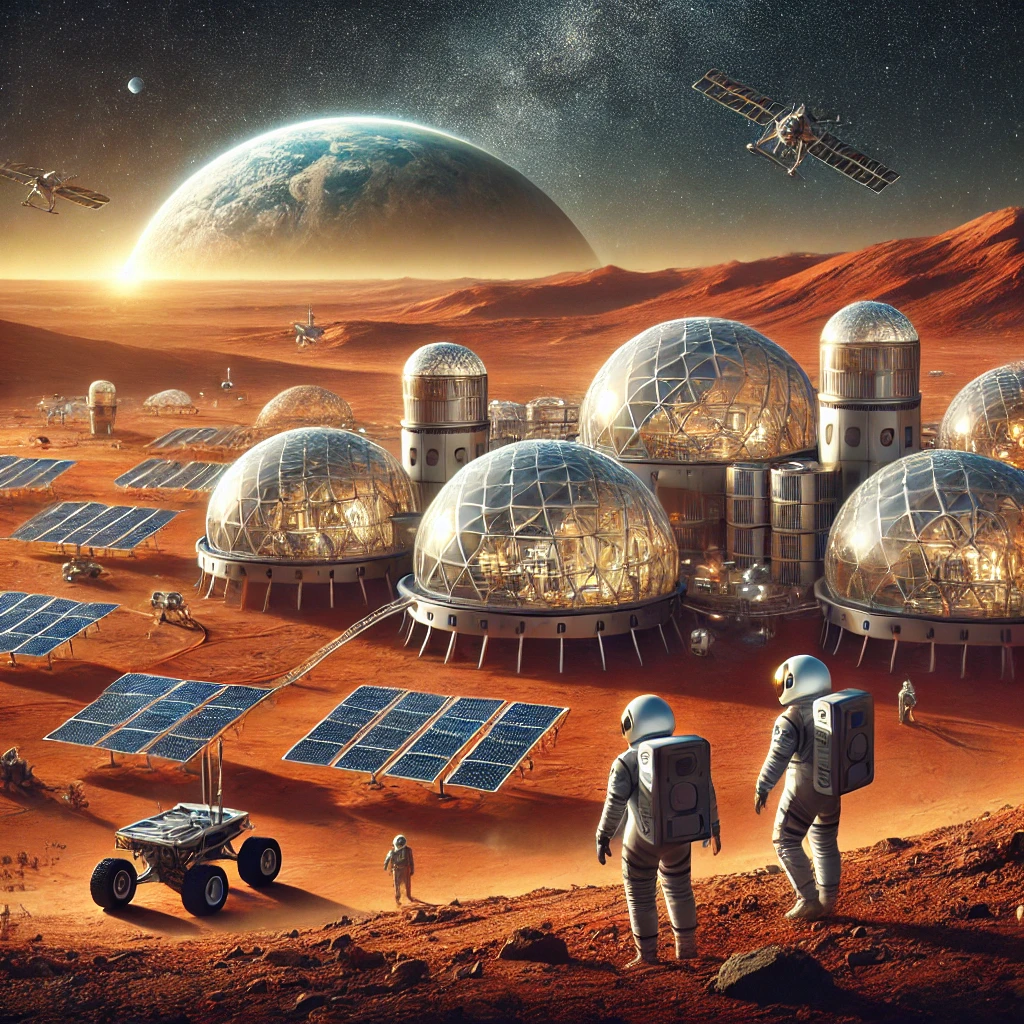Can Humans Really Colonize Mars?
Article Source: The Journal of the Royal Astronomical Society of Canada

Why You Should Care
The idea of humans living on Mars isn't just science fiction anymore. Understanding the possibilities and challenges of colonizing Mars is essential as space exploration advances. It could lead to new technologies, inspire generations, and perhaps even secure humanity's future.
Answering the Question… Can Humans Colonize Mars?
From a researcher's perspective, colonizing Mars is possible, but it comes with immense challenges. The study estimates that setting up a sustainable colony would require transporting around 1,000 tons of material from Earth. The harsh Martian environment, including low temperatures, high radiation levels, and lack of oxygen, presents significant obstacles. However, with advancements in technology and life support systems, researchers believe humans could survive and thrive on Mars.
How Was the Study Done?
Researchers conducted simulations and reviewed existing Mars mission data to understand what it would take to colonize the Red Planet. They looked at factors like transportation, life support systems, and potential habitats. The study also analyzed the psychological and physical effects of long-term space travel and living in a low-gravity environment.
What Was Discovered?
- Transportation Needs: Establishing a Mars colony would require transporting at least 1,000 tons of material from Earth, involving multiple launches and significant logistical challenges. The study estimated that it would take approximately 30 to 40 launches of a heavy-lift rocket, such as SpaceX's Starship, to deliver the necessary materials.
- Environmental Challenges: Mars has an average surface temperature of about -80 degrees Fahrenheit, with extremes reaching as low as -195 degrees Fahrenheit near the poles. Additionally, radiation levels on Mars are more than 20 times higher than on Earth due to the thin atmosphere and lack of a magnetic field. This necessitates the development of robust shielding technologies to protect future colonists.
- Life Support Systems: The study emphasized the importance of closed-loop life support systems capable of recycling 95% of the water and air. This would include advanced filtration systems and possibly bioregenerative systems that use plants to produce oxygen and food. The estimated water requirement for a Martian habitat would be about 50 liters per person per day, which must be recycled almost entirely.
- Psychological Impact: The study highlighted the risks of psychological stress due to isolation and confinement in small habitats for extended periods. Researchers suggested that future missions include regular virtual communication with Earth, as well as recreational activities and mental health support to mitigate these effects.
- Terraforming Potential: The idea of terraforming Mars, or transforming its environment to be more Earth-like, was explored as a long-term goal. However, current estimates suggest that it would take centuries, if not millennia, and would require technological advancements far beyond current capabilities. The process would involve increasing the planet's atmospheric pressure and temperature, potentially through the release of greenhouse gases.
Why Does It Matter?
Understanding the feasibility of colonizing Mars helps us prepare for the future of space exploration. While there are significant challenges, the potential benefits, including scientific discoveries, technological advancements, and even ensuring the survival of humanity, make it a worthy endeavor. This research lays the groundwork for what could be humanity's next giant leap.
Link to full article: The Journal of the Royal Astronomical Society of Canada
